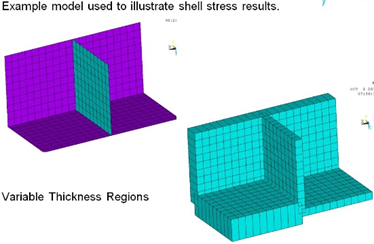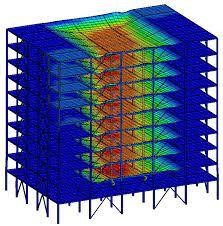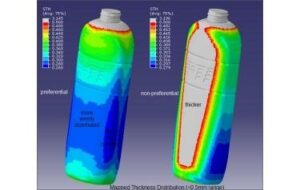Practical Applications of 2D Shell Elements: Unveiling Their Versatility in Structural Analysis
Shell elements are finite elements used in structural analysis to model thin-walled structures or components, such as plates, shells, and membranes. These elements are designed to capture the behavior of these structures, which have two dominant dimensions (length and width) and a relatively small thickness compared to the other dimensions.
Shell elements are used to represent the behavior of structures subjected to bending, membrane forces, and in-plane and out-of-plane loads. They are particularly useful in analyzing structures with large aspect ratios, where the thickness is significantly smaller compared to the other dimensions.
These elements have six degrees of freedom per node, including three translations (u, v, w) and three rotations (θx, θy, θz). They can accurately capture both bending and membrane behavior of thin-walled structures. Examples of 6-DOF shell elements include the MITC4 (Mixed Interpolation of Tensorial Components) and DKQ (Discrete Kirchhoff Quadrilateral) elements.

Shell elements have several practical applications across various engineering disciplines. Some notable applications include are:
Structural Analysis: 2D shell elements are commonly used in structural engineering for the analysis and design of thin-walled structures such as roofs, walls, and shells. They are suitable for modeling structures with complex geometries and capturing the bending and membrane behavior of the shells under different loading conditions.


Aerospace and Automotive Industry: 2D shell elements find extensive use in the aerospace and automotive sectors. They are employed to simulate the behavior of aircraft fuselages, car body panels, and other thin-walled structures. These elements allow for efficient analysis of lightweight structures while considering their stiffness, stability, and aerodynamic performance.

Shipbuilding and Maritime Engineering: 2D shell elements are utilized in the design and analysis of ship hulls, offshore platforms, and marine structures. They help assess the structural integrity, stability, and hydrodynamic performance of ships and offshore installations subjected to wave loads, wind forces, and other environmental conditions.

Building Construction: 2D shell elements are applied in the design and analysis of building facades, curtain walls, and cladding systems. They enable engineers to study the behavior of these thin-walled elements under wind loads, seismic forces, and thermal effects, ensuring their structural integrity and performance.

Composite Material Analysis: 2D shell elements are used to model and analyze composite materials, which are widely used in industries such as aerospace, automotive, and sports equipment. They assist in studying the behavior of composite structures, including laminate panels and sandwich structures, taking into account their anisotropic properties, delamination, and failure modes.
Packaging Industry: 2D shell elements find applications in the packaging industry, particularly for analyzing the structural behavior of containers, bottles, and packaging materials. They help determine the deformation, stress distribution, and load-bearing capacity of these thin-walled structures under various mechanical and environmental conditions.


The practical applications mentioned above emphasize the flexibility of 2D shell elements in accurately representing the behavior of thin-walled structures. This capability allows engineers to effectively design and enhance the performance of such structures in various industries and applications. Students attending the course in Artem Academy, particularly focused on using HyperMesh software, will gain comprehensive knowledge and skills in utilizing these 2D elements for optimal design outcomes.




